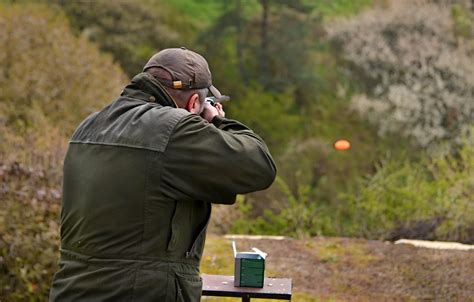Clay Pigeon Shooting How To: Perfect Your Stance and Grip
Clay pigeon shooting, a thrilling blend of precision and instinct, demands a solid foundation. Before you even think about leading the target, you must master your stance and grip. These fundamentals significantly impact your accuracy, consistency, and overall shooting performance. This comprehensive guide will break down the essential elements of achieving the perfect stance and grip, helping you elevate your game from novice to proficient.
Finding Your Ideal Stance: Stability and Balance
The perfect stance is not a one-size-fits-all solution. It's about finding what feels natural and comfortable while providing the stability needed for accurate shots. Several key elements contribute to a successful shooting stance:
Feet Positioning: The Foundation of Stability
Your feet should be shoulder-width apart, with your weight evenly distributed. A slight bend in your knees helps absorb recoil and maintain balance, preventing jerky movements. Experiment with a slightly wider or narrower stance to find what best suits your body type and shooting style. Avoid locking your knees—this will hinder your ability to smoothly react to the clay's trajectory.
Body Posture: Maintaining Upright Alignment
Stand tall with a straight back, but avoid rigidity. Imagine a string pulling you upwards from the crown of your head. This posture maintains balance and allows for a smooth, controlled swing. Slouching or leaning will affect your aim and consistency. Your shoulders should be relaxed and your head should be held naturally, allowing for clear vision of the target.
The Importance of Balance: A Key Factor
The ability to shift your weight subtly during the swing is critical for smooth transitions and accurate shots. Your balance should be such that you can smoothly transition your weight from one foot to the other without compromising your aim or stability. Practice shifting your weight subtly to feel the transition and improve your balance.
Mastering the Grip: Control and Consistency
Your grip is equally important; it's the link between you and the shotgun. An incorrect grip can lead to poor aim, excessive recoil, and inconsistent shots.
The "Gentle Hold": Avoiding Excessive Pressure
Avoid gripping the gun too tightly. A firm yet gentle hold allows for natural movement during the swing without restricting your aim. Imagine you’re holding a baby bird—firm enough to keep it secure but gentle enough to avoid harming it. Too much grip can lead to muscle tension, affecting your accuracy and potentially causing injury.
Hand Placement: Finding the Sweet Spot
Proper hand placement ensures a balanced feel and minimizes recoil. Your front hand (typically your non-dominant hand) should be positioned just below the forearm, ensuring a consistent support while leaving room for your shooting hand to move smoothly. Your dominant hand should be positioned closer to the receiver, providing the necessary control.
The "High" vs. "Low" Grip: A Matter of Preference
Experimenting with a higher or lower grip might be necessary to find what feels most comfortable and aligns best with your body type and shooting style. A higher grip, where your hands are placed higher on the stock, might be preferable to some, offering a more significant amount of control. Conversely, a lower grip provides a more natural feel to others, ensuring a fluid swinging motion. Practice both methods and choose what's right for you.
Frequently Asked Questions (PAAs)
Here are some common questions surrounding stance and grip in clay pigeon shooting:
How do I know if my stance is correct?
Your stance is correct when you feel balanced, stable, and comfortable. You should be able to move smoothly and naturally without feeling restricted or tense. If you feel any strain or discomfort, adjust your position until you find what works best.
What should I do if I experience excessive recoil?
Excessive recoil often indicates an incorrect stance or grip. Ensure your stance is stable, your weight is balanced, and you have a firm but gentle grip on the shotgun. Consider using a recoil pad or adjusting the gun's fit to further reduce recoil.
How important is consistent grip pressure?
Maintaining consistent grip pressure is paramount. Varying pressure throughout the shooting sequence leads to inconsistencies in aim and shot placement. Practice your grip until you can maintain a comfortable yet firm hold throughout the process.
Can my stance affect my lead on the target?
Yes, an unstable or incorrect stance can negatively impact your ability to accurately lead the target. A solid, balanced stance provides a stable platform for your swing and helps you maintain consistent lead.
By mastering your stance and grip, you build a strong foundation for success in clay pigeon shooting. Remember, practice is key – consistent training will solidify your technique and help you develop muscle memory, leading to improved accuracy and enjoyment of the sport.

